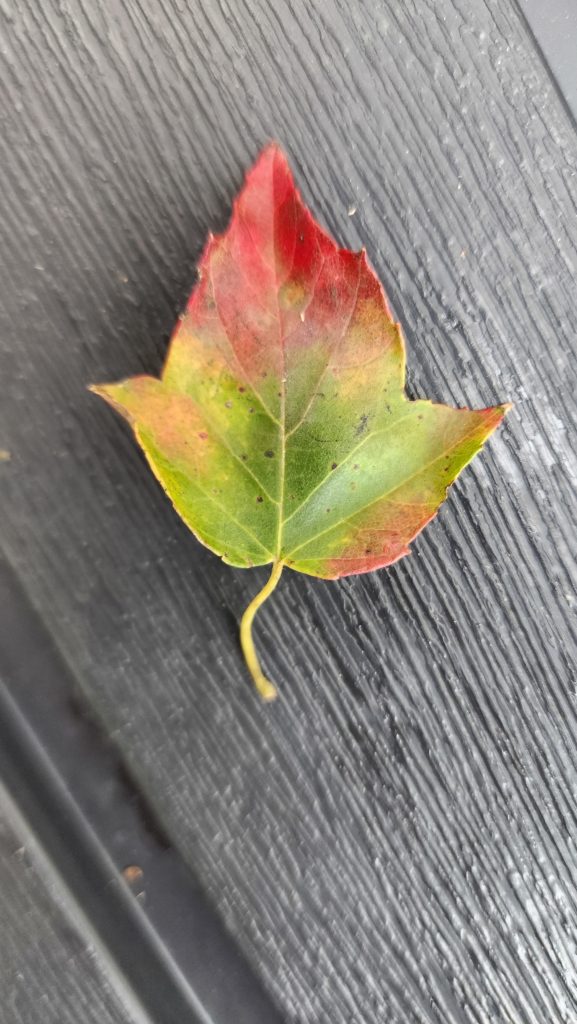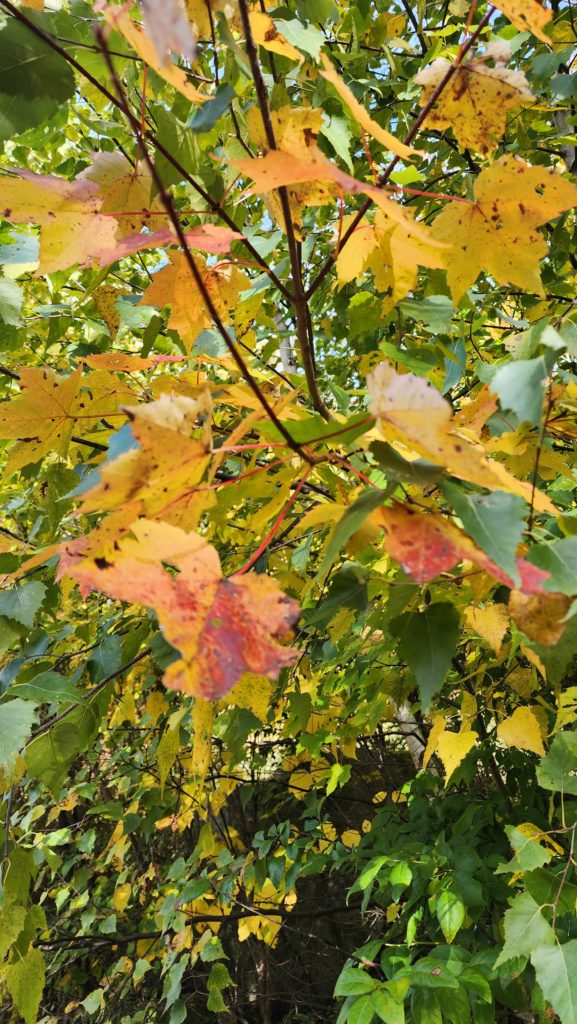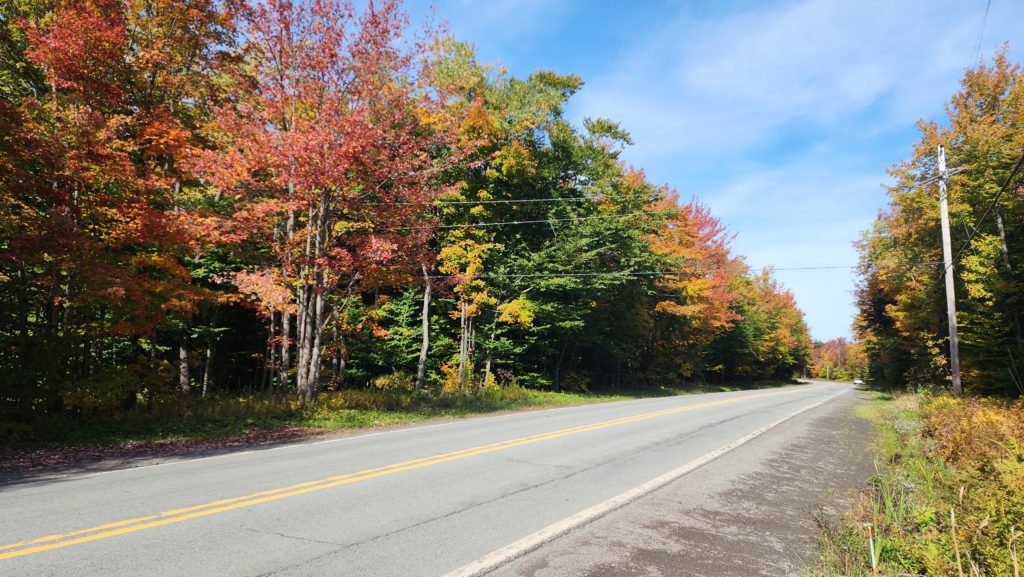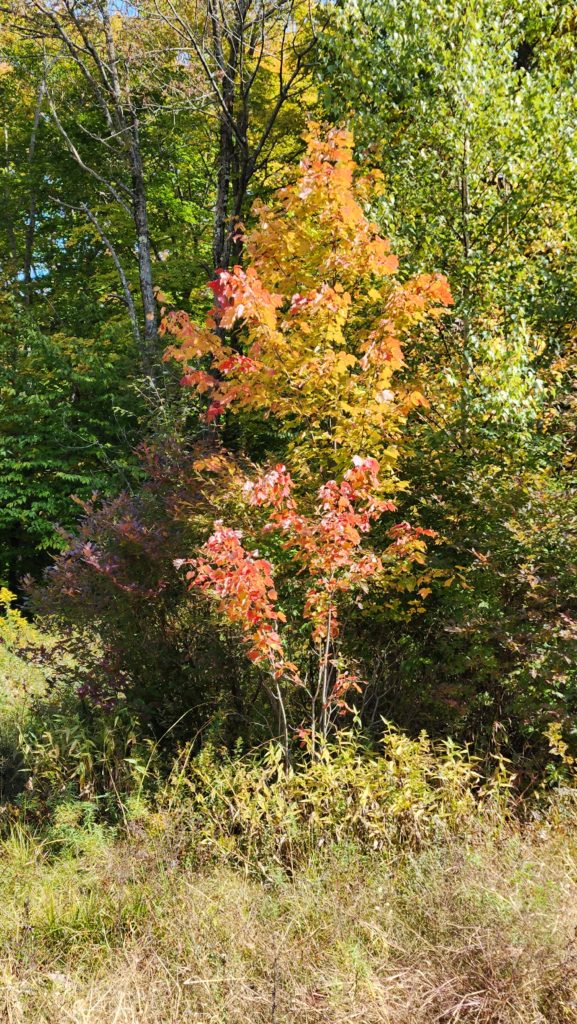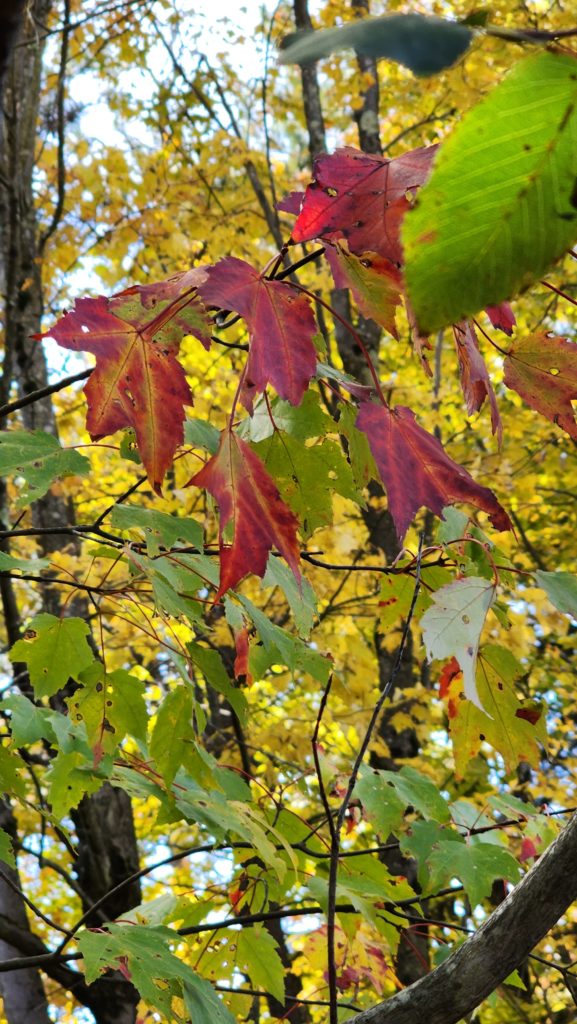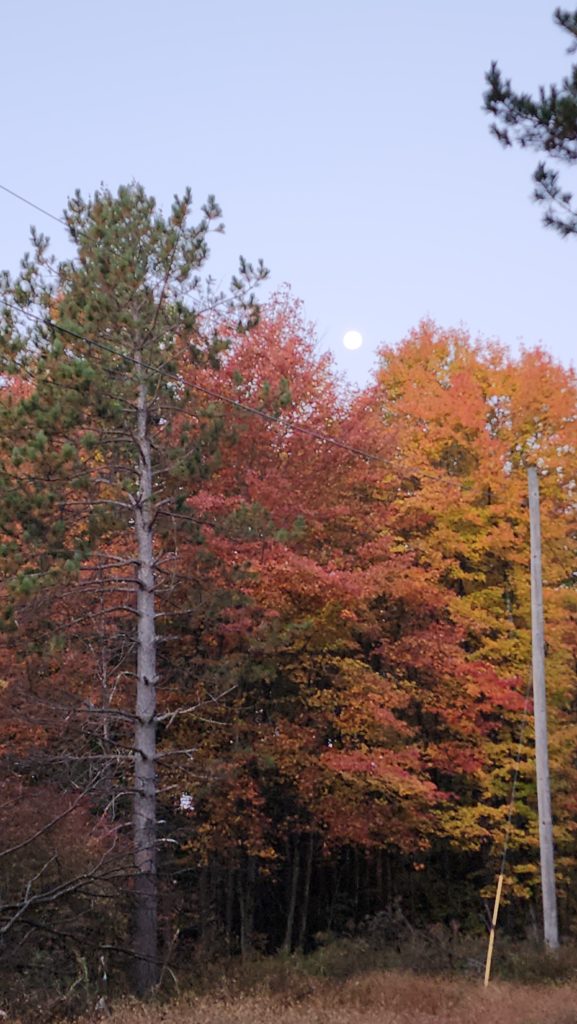It’s obvious enough that the sawmill is an outdoor machine, but at the same time, the engine, especially, should be protected from the weather. At least a little bit. And so it was, another quick post frame structure was built. I learned a few things from the wood shed, including that I thought its roof support was way overkill, especially considering snow doesn’t like to linger on metal roofs. I didn’t bother to design this one beyond a single pencil sketch, enough to figure out what parts I needed and approximately how they all went together. This isn’t rocket surgery and it doesn’t need to be beautiful, just functional. I’ll save the precision work for when it matters — and this isn’t then.
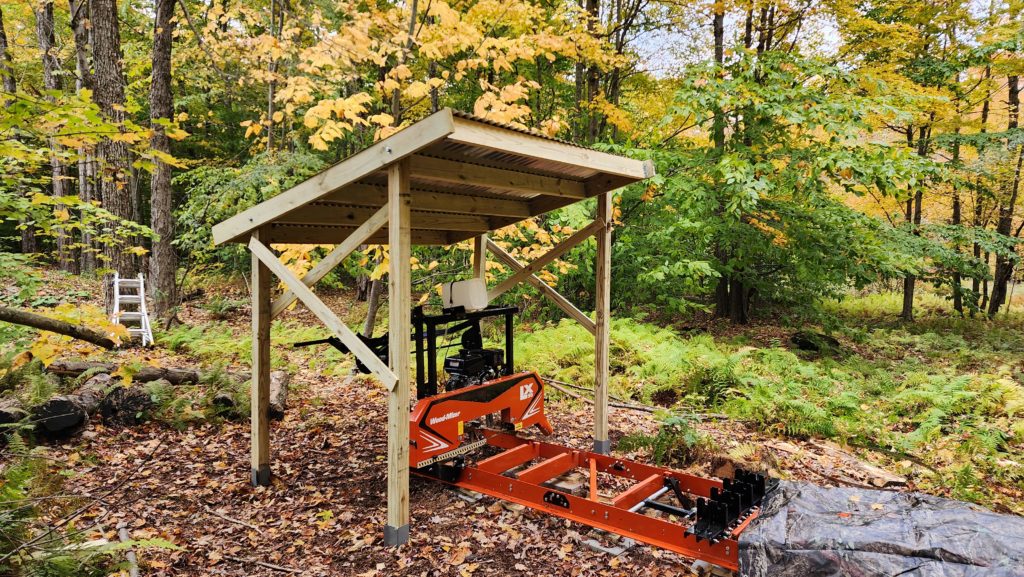
The astute observer may notice a few flaws. There are some. And I don’t care. It will do its job just fine and it wasn’t worth the considerable effort to make it closer to perfect. Building things solo is challenging enough. Doing so on soft, uneven ground, all the more so. This picture doesn’t really give a proper sense of size – the front posts are 8ft tall and they are 8ft apart as they straddle the mill. This will keep the bulk of the rain and snow off. I’ll still put a canvas cover over the engine to keep it tidy. Something more like a tarp is not a good long-term solution, as it can trap moisture (see the poor woodpile from last year for proof) from the ground and cause its own problems. This little shelter should be enough to keep most of the abuse of rain and snow off the important bits. Maybe I’ll put up a “shower curtain” of sorts around it, to further dissuade blowing snow from piling on. We shall see.
Building this was more challenging than you might have expected. For starters, I wanted it approximately aligned with the orientation of the machine, but obviously set out some distance from it. I had an idea for finding that position… a couple of pieces of scrap wood made a large-format square to locate and orient the posts with respect to the track.
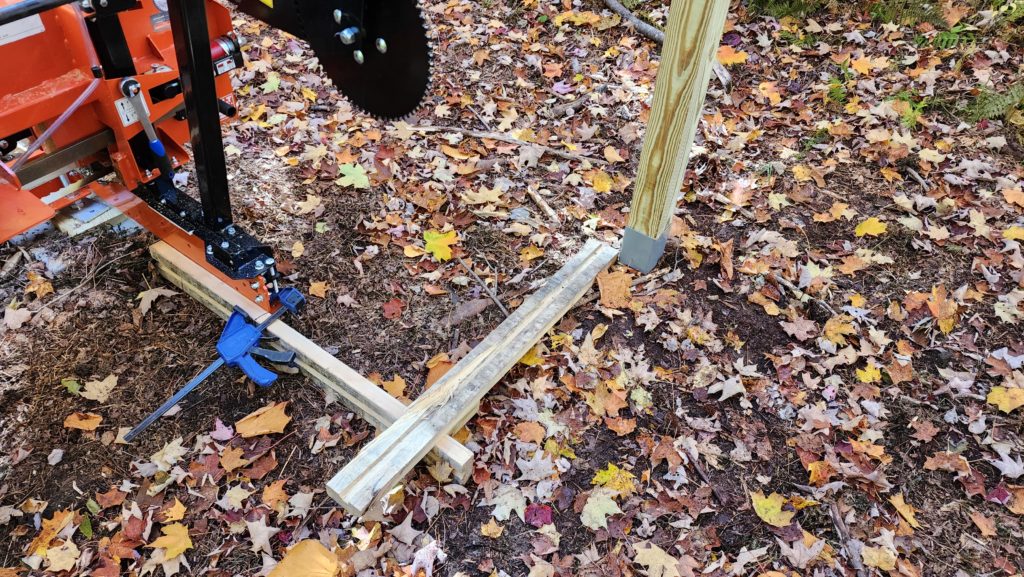
What seemed like a good idea at the time – using post anchors (the metal collars you see have a 30″ spike below them that is driven into the earth) – turned out to be a lot of trouble. Finding a spot that didn’t have rocks in the way of the spike was one problem. Actually driving them in was another — they did not want to stay straight and plumb, even when they started that way. Tweaking their position between blows with an 8# sledge was not exactly a precision operation. And if it went too far off, which happened several times, now I’ve got this metal collar at ground level, with a 30″ spike below it, that I somehow have to remove from its position. It’s meant to be an anchor. It doesn’t come easily. So you’ll forgive me that when I discovered the final positions of the posts, after bashing them 30″ into the ground a few times each with an 8# hammer, was an inch or two off their ideal placement, I decided that was still good enough for a sawmill shelter.
I did think ahead a bit on how to make building the roof easier. I pre-loaded the rafters that bolt to the posts with joist hangers. This way, the cross joists could just drop right in and be safely held in place while I drove the fastener screws into the hangers. This was a fine plan, but until at least one of these is screwed in place, the hanger-bearing rafters can rack a bit and find their way to dropping the cross joist. I had the forethought that this might be the case, so no 2x6s came raining down on me. I installed a ratchet strap (black with red) temporarily to pull the hanger-rafters close enough together to guarantee they wouldn’t drop the cross joist. That did the trick nicely. What it didn’t do was guarantee that the roof structure itself was any kind of square, though.
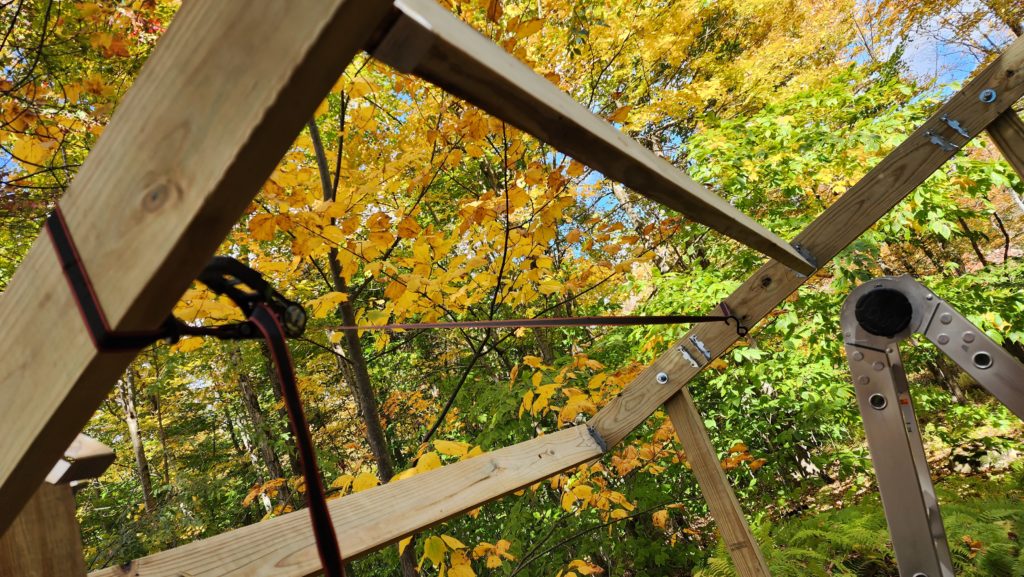
It wasn’t. It wasn’t so bad it wouldn’t work, but it wasn’t good enough to make the upper lip of the roof look nice. I don’t care. It’s a machine shelter in the middle of the forest. It’ll shelter the machine just fine, no matter how skew the roof metal is to the framework below it.
For a good snow-shedding roof slope, the front posts are the full 8ft as supplied by the lumber yard and the rear posts are about 6’8″. I computed the drop of the overhang at the low end to be sure it would clear the top of my head at 6’1″ from the ground (plus an inch for boot tread) and an inch or two more to account for vertical motion while walking. Perfect. Build it. Then I noticed a problem with the roof at the low end.
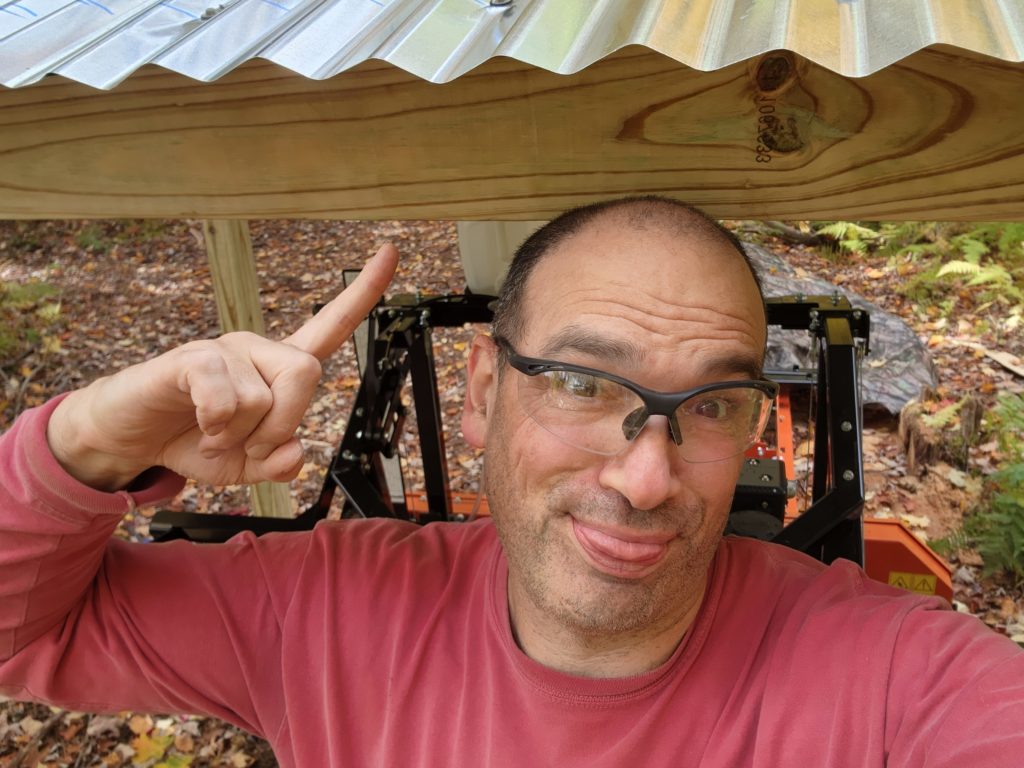
Notice the approximately MINUS one inch of clearance from the bottom of the cross joist to the top of my noodle? Yeah, that. I did in fact have plenty of clearance (~4″) to the roof SURFACE but I failed to account for the height of the cross joist. I don’t need to clear the roof. I need to clear the understructure of the roof. Ooops.
I’ll just have to duck. Correcting the height of the structure at this point is way too much work. It’s not actually impossible, but it is way out of proportion to how important it is. If I hit my head too many times, I may change my mind about that. Or attach half a pool noodle or some pipe insulation as a bumper.
Moral of the story? A quick sketch and 2 minutes of trig is enough to buy the parts and build it, but not enough to be absolutely sure you won’t hit yer head.
In other news, I noticed last winter that there was one particular type of wood that smelled really good when it burned, but by the time I noticed, more than one kind of wood had been loaded into the stove, so I could never be sure what kind it actually was. Add to that the fact that most of the firewood has no bark and is split at least into fifths to the point where there’s not much to use for identification. Usually it’s bark and leaves for that kind of thing. No bark. No leaves. A few species are easy to read just by looking at the wood itself, like cherry and oak, but aside from that, mostly it’s just hard, white wood. What to do? Well, I knew Hickory was known for being fragrant — favored for smoking meats and flavoring barbecue sauce — so maybe what I smelled was Hickory? But how to tell without the bark? Well, it turns out that Hickory has a tell.
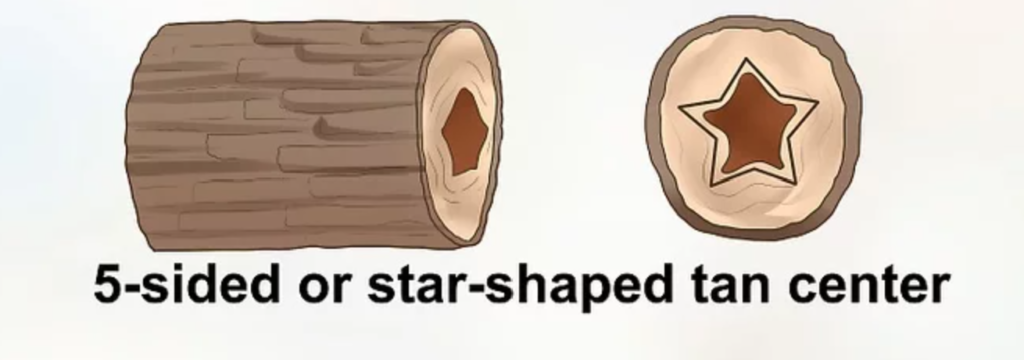
So I took a closer look at a piece of wood that was similar to the sample I thought might be Hickory.
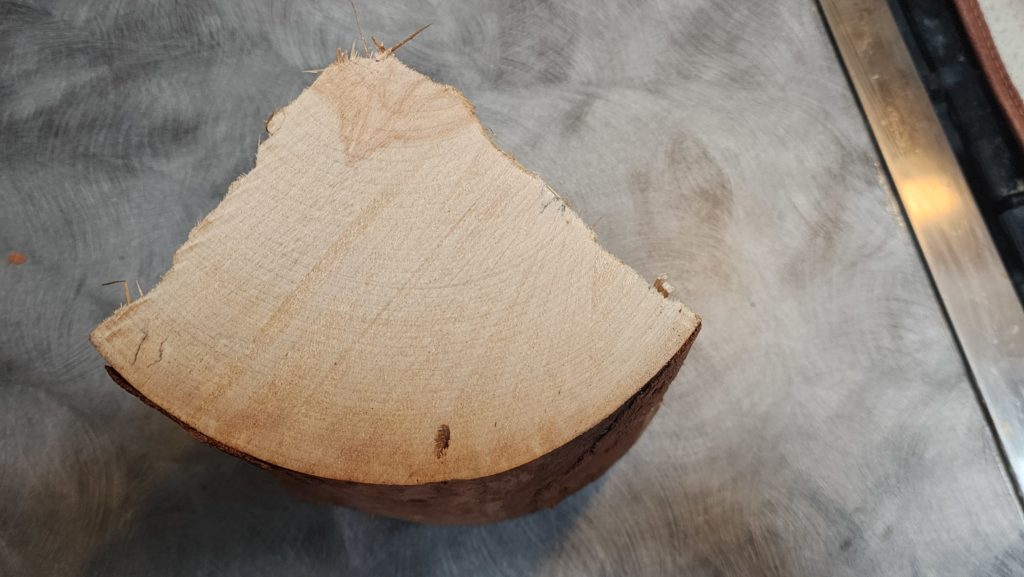
Well, looka that! Not quite a quarter of the log, but the center is darker and has a distinctly pointed feature. Sure looks like about 1/4 of the star shape shown above. And of course it smells wonderful when it burns. Right. That’s the sweet, smoky smell that seemed oddly familiar. It IS familiar. It’s my favorite barbecue sauce in wood form! Hello, Hickory log!
There aren’t a lot of Hickory trees out this way these days, but there are some — even a few lakes with Hickory in their name — and evidently at least one of them made it into my load of firewood. How lovely!
Once again the inconvenient truth that my address is not on maps has reared its ugly head. The woodstove I ordered for the W.O.G. was to be delivered a week ago. When the freight company called to schedule final delivery, I said I had special instructions and the clerk said the driver would call day-of for that. They never did. In fact, nobody called. They just didn’t show. I called them, got someone who seemed helpful but didn’t actually cause anything to get resolved. I found an email address online for someone local at the company and reached out. After a few days, finally, I was able to give instructions to someone who could use them and now, a week later, my delivery is once again scheduled for what will be, if they make it, 12 days late. This is of course inconvenient but the weather has been holding lately, so it won’t be too cold to do the outside flue work when it comes.
I did not at all enjoy working on the W.O.G. interior in freezing — and some cases subfreezing — temperatures last winter. I still have some interior work left to do before I can really use the space the way I intend to and that work is slated for the next few months. But only if I can get some heat in there to be comfortable!
The woodstove actually has two purposes. The first is to heat the workshop space in the winter. The second is scrap wood disposal, of which I have a bunch. Some construction off-cuts. Some from the mill — things that are too beat up or irregular to be boards for projects but they’re still wood. And surely there will be scraps left from finer woodworking activity, too, once that gets started in earnest.
Autumn is definitely in full force up here. A few snapshots from around the property. Click for larger.
